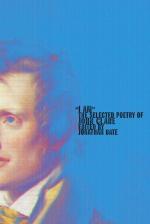|
This section contains 5,881 words (approx. 20 pages at 300 words per page) |

|
SOURCE: “Conventions and Their Subversion in John Clare's ‘An Invite to Eternity’,” in Criticism, Vol. XXIV, No. 1, Winter, 1982, pp. 1-15.
In the following essay, Strickland argues that Clare's “An Invite to Eternity” (probably written in the mid-1840s) is indicative of the power of Clare's “asylum” writings and of the manner in which Clare utilized convention for powerful effect.
In recent years several critics have re-examined the nature-poetry of John Clare in relation to the eighteenth-century topographical tradition and its Romantic revisions.1 This has helped to clarify the context of the better part of the “peasant poet's” corpus. But if Thomson and Cowper ranked among Clare's favorite poets, his favorite play was Macbeth, which he claims to have read “about 20 times,”2 and this predilection, along with his years of ballad-collecting, perhaps bears more strongly on the preternatural poems of his twenty-three year confinement in St. Andrew's County Lunatic...
|
This section contains 5,881 words (approx. 20 pages at 300 words per page) |

|


